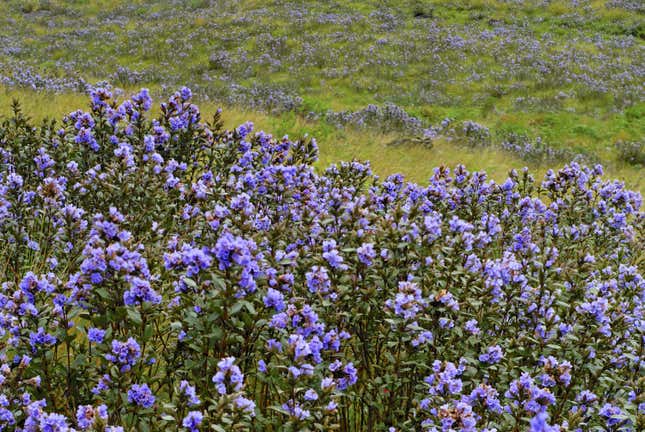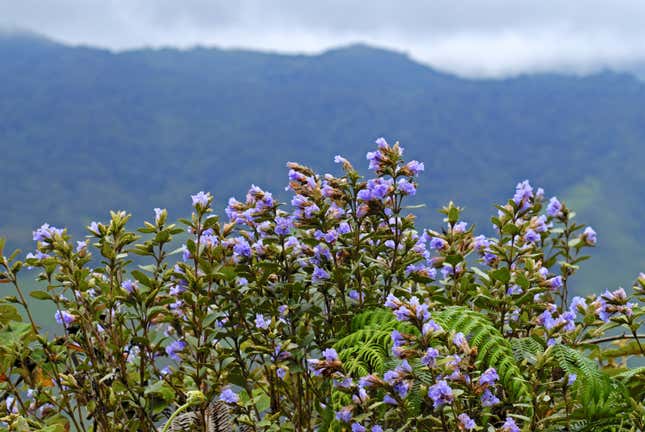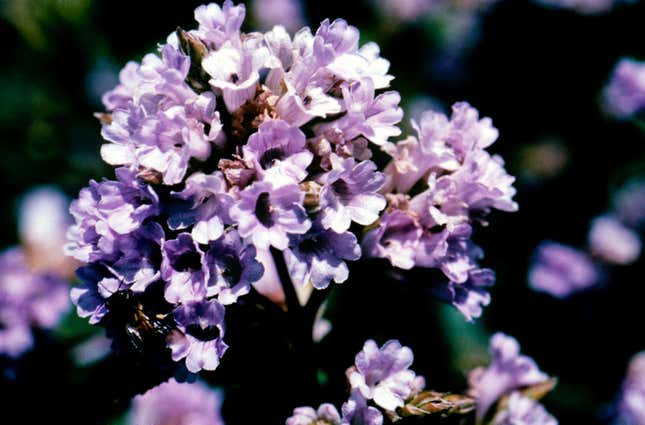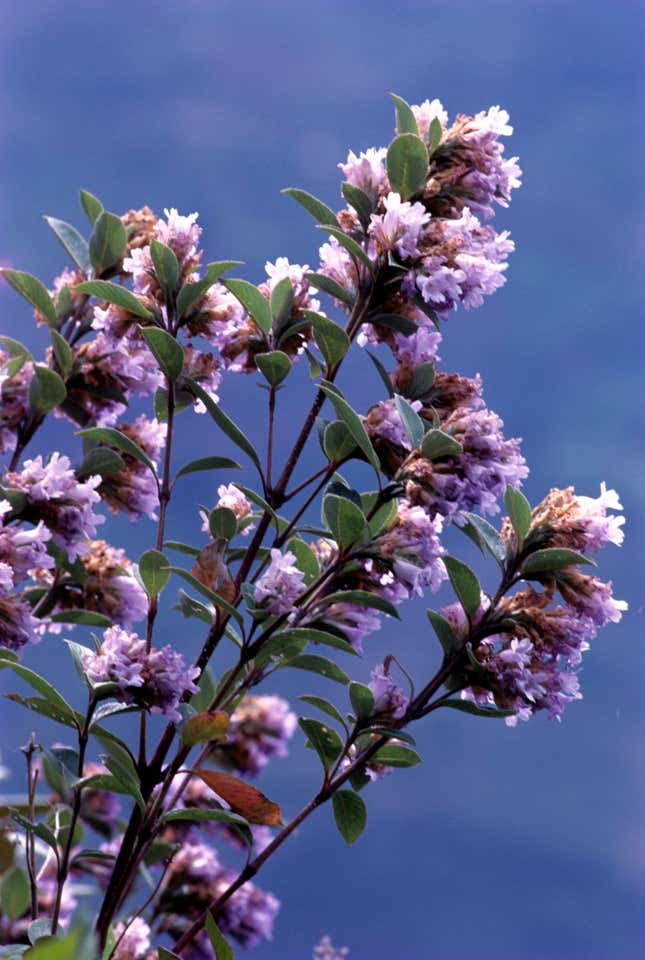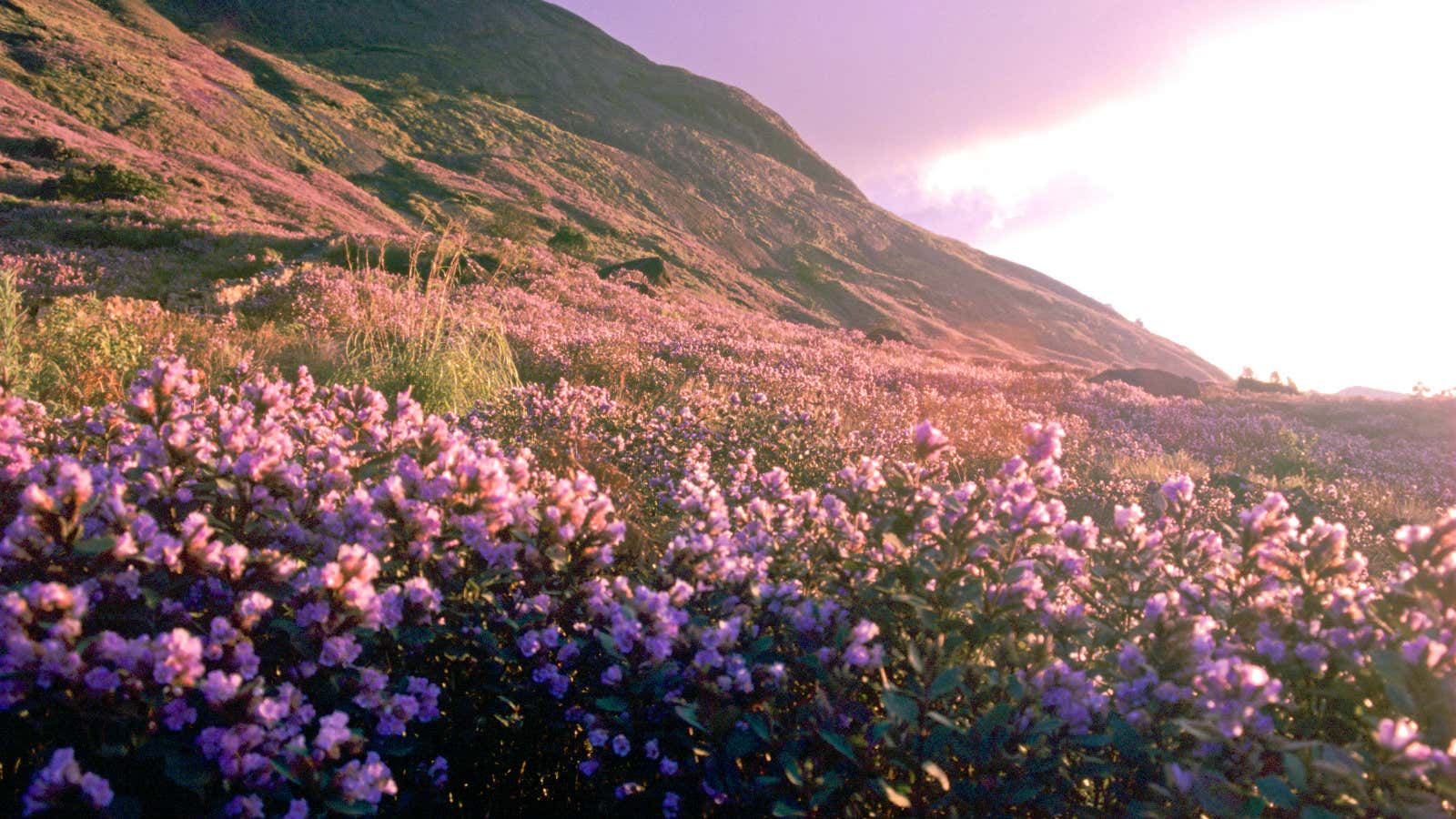In August, the devastating floods that engulfed India’s southern state of Kerala overshadowed a unique botanical phenomenon that occurs only once every 12 years.
Over the past two months, the Strobilanthes kunthianus shrub, locally known as the neelakurinji (blue flower), has bloomed across the hills of Munnar, covering the landscape with a carpet of lilac and blue. Found over 1,500 metres above sea level in the shola forests of the Western Ghats, the shrubs range from two feet to ten feet in height, and reproduce only once in their lifetimes, dying after they flower. It then takes 12 years for the seeds to sprout, and the process to repeat itself, resulting in stunning views of the flowers between August and October.
These flowers have fascinated visitors since the 19th century, when naturalists first started recording the many different Strobilanthes species in British-ruled India. The Nilgiri Hills in Tamil Nadu were even named after the flower, which once blossomed across them and the Palani Hills adjoining Kerala and Tamil Nadu. But for decades, the exotic flower’s habitat has also dwindled steadily as plantations and human settlements expanded across the area.
As early as 1935, one Robinson M E reportedly wrote in the Journal of the Bombay Natural History Society:
“It is noted by all who have seen two or three flowerings, that at each successive period, the area over which it appears becomes less and less. Every year more land in these hills is taken up and cleared for ten estates, or for fruit and vegetable culture, or for building. Many a hillside that was once blue with Strobilanthes is green with the little flat topped tea bushes, and Strobilanthes is ruthlessly exterminated as pest.”
Today, local activists and the government are trying to conserve the unique shrubs, but the hills of Munnar are now one of their last habitats. When they bloom, thousands of tourists descend upon the area in Kerala’s Idukki district, though this year the natural disaster discouraged many. And with the India Meteorological Department (IMD) issuing a red alert for heavy rain again this coming weekend, Kerala’s chief minister Pinarayi Vijayan has warned visitors to avoid Munnar.
As the end of the blooming season approaches, only a lucky few have managed to capture the rare sight, which last occurred in 2006. Here are some of this year’s images:
Here’s some photos of the flowers from previous years, courtesy Kerala Tourism:
